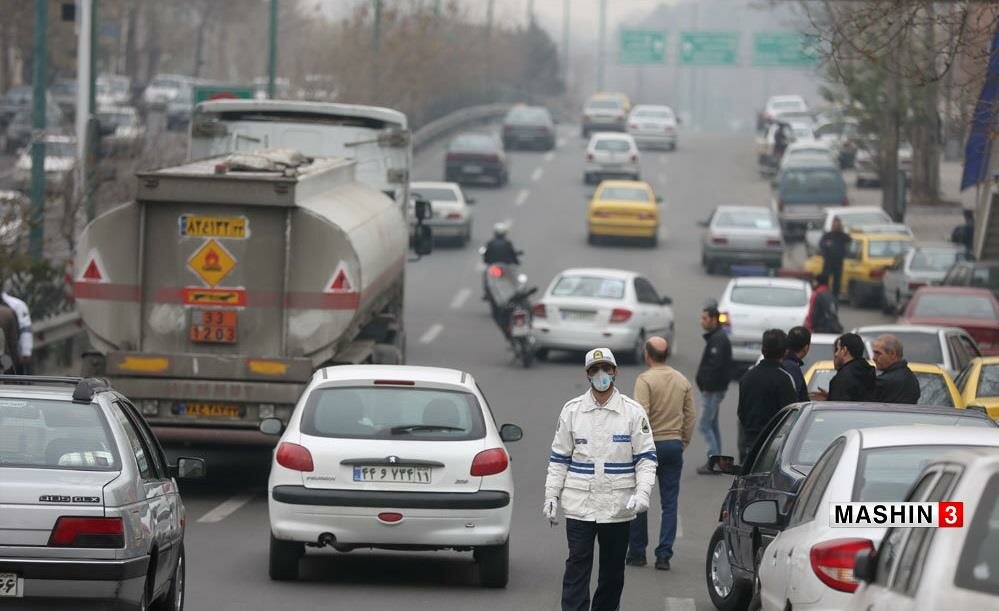Technical inspection unreliable criteria making LEZ inefficient

TEHRAN — Poor air quality has turned into a serious threat to the health condition of the citizens in metropolises like Tehran. Over 12,000 pollution-caused deaths are annually reported in Iran, a big share of which is in big cities.
The good news is, things have been getting better recently, at least in Tehran, as people have passed fewer polluted days during the current Iranian year. However, the satisfying condition can hardly be attributed to the measure implemented by the municipal bodies like the Low Emission Zone scheme which is underway in the metropolis.
In line with this viewpoint, Mohammad Kazemi, an environmentalist and researcher in the field, says the ongoing scheme, which requires all vehicles to go through technical inspection tests to enter the borders of the capital city, can only reduce 1.75 percent of the emissions released in the air.
“In case the LEZ or ‘Reduction’ scheme is implemented at best, it would reduce only 1.75 percent of the pollutants flowing in the air,” Kazemi said.
Therefore, the improving air quality in the metropolis which is conceivable from the detailed charts provided by Tehran Air Quality Control Company, cannot be attributed to the implementation of the schemes like LEZ, he added.
What is LEZ?
Passed in August 2015 by the High Council for Coordination of Urban Traffic, the LEZ scheme is aimed at banning highly polluting cars from entering Tehran in three phases.
The initial step, which took effect in October 2016 underway until November 24, 2018, merely involved checking the vehicles’ technical inspections in the restricted areas. Those breaking the regulations used to be fined 500,000 rials per day, ISNA reported.
The restricted zone is an 80-square-kilometer area in central parts of the capital in which only public transportation vehicles and some other cars with special allowances are authorized to enter during working hours. The second stage, which took effect on Nov. 24, expanded the restricted zone to cover the entire city.
LEZ obliges drivers of highly polluting cars to take an alternative method of transport or choose to repair or dump their cars.
Seemingly, the early phase was only meant to motivate car owners to refer to the inspection centers to form the ground for the second raid against air-polluters.
According to Mohsen Pour Seyed Aqaei, CEO of Transportation and Traffic Organization of Tehran Municipality, the new step covers a much broader area and restrict cars, buses, and heavy vehicles lacking technical inspection stickers from entering the overcrowded city.
The plan targets carbureted motorcycles, diesel cars without filters and other clunkers -- the three main sources of particulate matters smaller than 2.5 micrometers.
All taken into account, it can be concluded that the ignorable effect of the scheme on improving air quality in the metropolis might be blamed on non-updated and poor standards of technical inspection tests, on which the LEZ is based.
Numerous reports on fraudulent actions by inspection testers, installing low quality or fake catalyst converters (which are supposed to purify the emissions released from the vehicles’ exhaust into the air), and finally, the non-standard vehicles produced by local car makers are adding to the inefficient and substandard criteria of technical inspection tests.
Altogether, the factors are the reasons why an air pollution scheme like LEZ doesn’t work well, Mohammad Kazemi the environmentalist said.
“Serious measures should be taken to curb the factors hampering the air pollution reduction schemes to yield good results,” he added.
Changing the way of assessing vehicles in test centers or setting more stringent tests like premium certificates, can do a lot in favor of the ultimate goal.
The premium certificate has higher standards than that of the normal technical inspection certificates. While in the normal tests, vehicles’ emissions are monitored in a low-speed performance, but for earning the premium certificate the carbon monoxide emission of cars is assessed at 2,500 rpm.
He also linked the improving air quality to the kind hand of Mother Nature and the wind blows.
Air quality status improving
Unlike the inefficiency of measures taken so far by TM to control the growing air pollution in the metropolis, data from Tehran Air Quality Control Company shows during the past months, Tehran residents had some relief with better air quality compared to the previous year.
Charts published on TAQCC website show that in February, for instance, the capital breathed less polluted air.
Bright blue skies were seen for approximately one-fourth of the studied period, as the air quality index was in ‘good’ condition for seven days.
The index categorizes conditions according to a measure of polluting matters into good (0-50), moderate (51-100), unhealthy for sensitive groups (101-150), unhealthy (151-200), very unhealthy (201-300) and hazardous (301-500).
Tehran saw 21 days of ‘moderate’ air quality, with the index swinging between 51 and 100.
TAQCC data proved that in February, sensitive groups in the capital breathed only 3 days of ‘unhealthy’ air as the index stood between 101 and 150.
Children, the aged, pregnant women and those with respiratory and cardiovascular conditions, all of whom fall in the sensitive group, were instructed to avoid long outdoor exertion.
Pollutants measured to determine air quality include carbon monoxide, nitrogen dioxide, sulfur dioxide, ground-level ozone and particulate matter (PM2.5 and PM10). AQI figures are calculated as per the concentration of pollutants.
Analyses reveal that the pollutant responsible for the three moderate days recorded in the studied period was PM2.5 (atmospheric particulate matters that have a diameter of smaller than 2.5 micrometers).
Leave a Comment